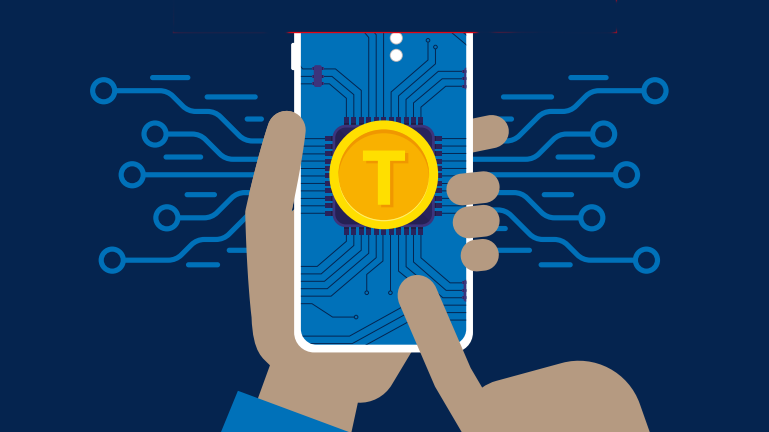We take a first look at Calastone’s recent survey of 150 treasurers across the US, Europe and Asia and find that automating settlement is emerging as a key priority for managing money in a pandemic.
At times of great market stress, treasurers need to know they can rely on money market funds (MMFs) as a safe haven for their cash. During the Covid-19 pandemic, recent research from Calastone notes that liquidity became the priority as massive inflows into institutional MMFs – $946 billion – took place between February and May this year, according to the Investment Company Institute.
Naturally, the environment in which treasurers were operating was far from normal. Volatility meant there was a premium on agility. To achieve this it was necessary to have the systems and capabilities in place to track relative position and yield data and ensure settlement.
Yet, as I noted in my blog last month, the process of investing in MMFs often involves time-consuming manual processes that increase costs and the risk of errors. It’s worth considering how this affects treasurers’ confidence in the liquidity of a fund, too.
In that blog we mentioned that we’d conducted a detailed survey of 150 treasurers in the US, Europe and Asia to find out their top concerns during this period.
The results are now in and I’m pleased to provide a high-level view of the key findings, ahead of a much more detailed review in coming weeks.
Top-line findings
What came across loud and clear was that lack of automation and over-reliance on manual processes are creating unwanted complexity for corporate treasurers, portfolio managers and others engaging with MMFs.
A stunning 93 per cent of respondents said that some aspect of the MMF investment process needed better automation. Only 30 per cent said their systems were either “fairly” or “very” automated. We even heard from respondents who said faxes were being used for some processes, which is causing inevitable frustration.
That sentiment was summed up by one respondent at a corporate in the UK: “To process 80 per cent by volume of automated stuff, it literally takes somebody pounding or pressing a few buttons on a computer system. But to process the remaining 20 per cent that has to be gone through manually ends up taking 70 to 80 per cent of your time.”
None of this is to suggest that treasurers are less interested in prioritising yield; on the contrary, it remains the top priority for 70 per cent of treasurers when it comes to MMF selection. While the asset class itself meets safety and liquidity criteria, treasurers are telling us that having real-time connectivity and some form of yield are now paramount.
When we asked our survey respondents what their primary selection criteria were when selecting a specific MMF, their answers were as follows:
- Yield (70 per cent) and fees (57 per cent) came top (together, these determine overall returns from the investment)
- Risk profile (49 per cent) and reputation of the investment firm (47 per cent) came third and fifth respectively (these are indicators of security)
- Liquidity/redemption (45 per cent) came fourth (highlights access to cash)
The importance of automation and settlement certainty
More than half (53 per cent) of respondents said that more automation would help with two things in particular: accessing sufficient real-time information on fund composition and having a consolidated view of products on a single platform.
Another respondent noted how securing a full view of their positions and fund information was a challenge that could really only be solved through more effective integration with each firm’s treasury system: “What we don’t have is a good data feed… and
so that is really perhaps the biggest limitation. It’s not ideal. It would be much nicer if the funds themselves could provide an open API or some sort of feed.”
Another key finding was the importance of settlement certainty and automation’s role in ensuring that. Asked which areas of MMF investment needed better automation, almost a third (32 per cent) cited settlement as a priority, just after trading (34 per cent). Interestingly, the proportion of respondents seeking improvements in settlements was significantly higher in Asia (52 per cent).
Automating settlement has significant impact on firms’ ability to optimise their liquidity positions. Settlement errors and delays can result in lost opportunities and other costs, as this respondent from a UK corporate told us: the firm recently found itself having to go into overdraft on one of its multi-currency accounts in order to be sure that funds it wanted to place in an MMF got there in timely fashion, given settlement uncertainty. “This completely defeated the purpose of [MMF investing] because you don’t get that much… to compensate for the fees that the banks will end up charging you.”
Introducing new levels of automation to money market funds is becoming a key priority for many clients as they assess performance during the pandemic. Calastone is therefore particularly pleased to be partnering with JP Morgan Asset Management to bring automated settlements to the bank’s Morgan Money platform, in a new arrangement announced in May. This allows JP Morgan’s users to settle trades in real time with certainty of execution, through automated trade workflows.
Automation is, of course, not an end in itself. It can free up the treasurer to spend more time on strategic matters – an area that has grown in importance since the last major financial crisis in 2008.
The point is well made by the UK’s Association of Corporate Treasurers in its latest survey of treasury priorities, which was carried out just before the pandemic was declared. With more operations and control mechanisms being automated, the individual treasurer “can continue to move their role upstream into wider business strategy”.
Helping treasurers achieve their wider strategic goals is one of Calastone’s key objectives, so we look forward to sharing further perspectives on our survey in coming weeks.











